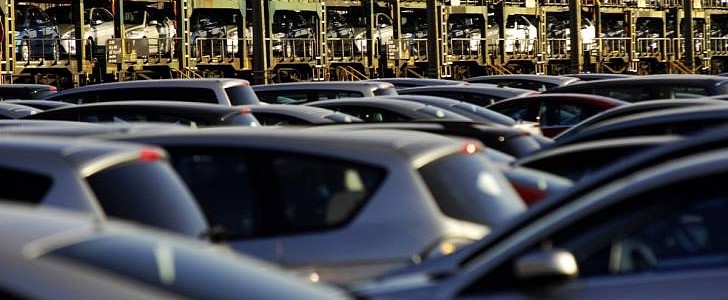The global chip shortage led to some crazy things happening this year, and one of them was the rise of used car prices. As economists would explain, it is all about supply and demand, but experts warn that this price bubble might burst in 2022.
According to a recent report published by the folks at KMPG, a multinational company with over 230,000 employees, data shows that used car prices have increased by 44 percent in November on a year-on-year basis. They have not seen anything like this in decades, which is a red flag.
Analysts from KPMG think that prices of used vehicles should come back down to their normal market values, but that would happen only when vehicle manufacturers are capable of producing and delivering a normal supply of new cars.
The report made by KPMG showed that the difference in price is, on average, 30 percent, but some vehicles got even higher figures. Buying a car (or any other product, for that matter) at a higher price does not make it more valuable if supply is sufficient or if alternatives exist on the market.
In other words, the used vehicles that were acquired in 2021 at a higher price than they were worth will never be worth more than what people paid for them. That is sad news for whoever had to borrow money to buy a used car this year, especially if they took out a multi-year loan.
The effects of this crisis could last for years, as supply is outbalanced by demand, while an estimated 30 to 40 million used vehicles have changed hands by the end of 2022 at an estimated 30 percent higher price than they were worth.
Regardless of how people paid for the used cars they acquired this year, those units will not be worth as much as they paid for them once the long delivery times of 2021 and the shortage of parts that hinders production are gone.
Sadly, people who have paid up to 40 percent more than what a car was worth will not get an extra 40 percent in value when they want to trade in that vehicle for a newer one.
Moreover, the most concerning fact about the entire crisis is that lenders might find themselves in hot water as well since the vehicles they financed are not worth the value they paid, and millions of customers, if not tens of millions (as KPMG estimates), could be underwater on their loans. The term refers to paying installments for a product that is not worth a significant part of what was paid for it.
How will the crisis end? Unfortunately, KPMG cannot predict the future but has created multiple scenarios. As they say, it depends on inflation, and rising prices for pre-owned vehicles could set a new ground floor for vehicle values. However, it also depends on the finance industry and its interest rates, as well as government policies, suppliers, and vehicle manufacturers.
In short, if you have been recently offered more than what you paid for your used car, and it is not a future classic and worth collecting, you could consider selling it for profit as long as you can find a reasonably-priced replacement.
Analysts from KPMG think that prices of used vehicles should come back down to their normal market values, but that would happen only when vehicle manufacturers are capable of producing and delivering a normal supply of new cars.
The report made by KPMG showed that the difference in price is, on average, 30 percent, but some vehicles got even higher figures. Buying a car (or any other product, for that matter) at a higher price does not make it more valuable if supply is sufficient or if alternatives exist on the market.
In other words, the used vehicles that were acquired in 2021 at a higher price than they were worth will never be worth more than what people paid for them. That is sad news for whoever had to borrow money to buy a used car this year, especially if they took out a multi-year loan.
The effects of this crisis could last for years, as supply is outbalanced by demand, while an estimated 30 to 40 million used vehicles have changed hands by the end of 2022 at an estimated 30 percent higher price than they were worth.
Regardless of how people paid for the used cars they acquired this year, those units will not be worth as much as they paid for them once the long delivery times of 2021 and the shortage of parts that hinders production are gone.
Sadly, people who have paid up to 40 percent more than what a car was worth will not get an extra 40 percent in value when they want to trade in that vehicle for a newer one.
Moreover, the most concerning fact about the entire crisis is that lenders might find themselves in hot water as well since the vehicles they financed are not worth the value they paid, and millions of customers, if not tens of millions (as KPMG estimates), could be underwater on their loans. The term refers to paying installments for a product that is not worth a significant part of what was paid for it.
How will the crisis end? Unfortunately, KPMG cannot predict the future but has created multiple scenarios. As they say, it depends on inflation, and rising prices for pre-owned vehicles could set a new ground floor for vehicle values. However, it also depends on the finance industry and its interest rates, as well as government policies, suppliers, and vehicle manufacturers.
In short, if you have been recently offered more than what you paid for your used car, and it is not a future classic and worth collecting, you could consider selling it for profit as long as you can find a reasonably-priced replacement.








